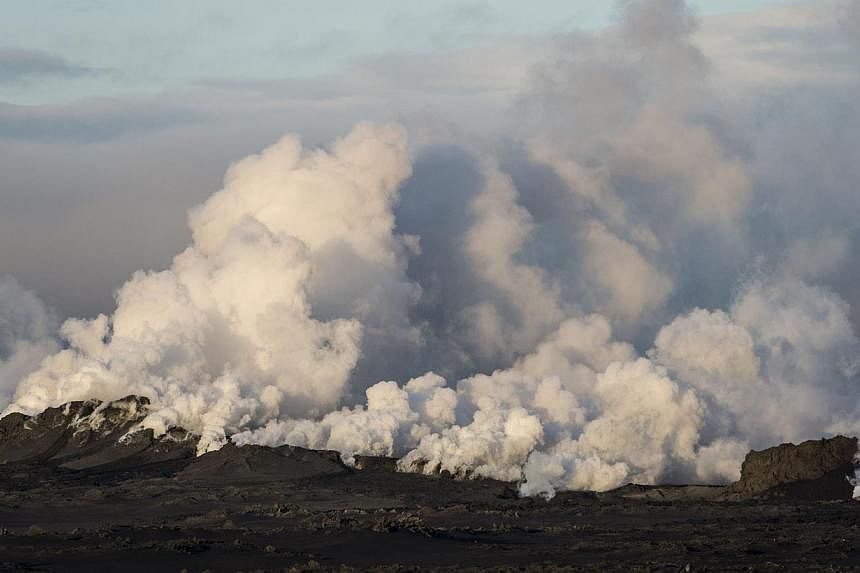REYKJAVIK (AFP) - Iceland on Sunday lowered its aviation alert on its largest volcano after a fresh eruption on a nearby lava field prompted authorities to enforce a flight ban for several hours.
The Bardarbunga volcano system, in the southeast of the country, has been rocked by hundreds of tremors daily since mid-August, prompting fears the volcano could explode.
The decision to lower the alert level to orange, from red, and lift the air traffic ban around the peak was taken after it appeared the most recent eruption had not led to a major release of ash into the atmosphere.
"Visibility (at) the eruption site is now good. No ash has been detected," said the Icelandic Meteorological Office, which is in charge of monitoring volcanic activity.
The restrictions imposed earlier in the day had not resulted in the closure of any airports, the Civil Protection Office said previously in a statement.
Sunday was the third time in a week that Iceland issued a red alert for aviation due to seismic activity at the peak, prompting fears of global flight chaos like that caused by another Icelandic volcano four years earlier.
In April 2010 Eyjafjoell, a smaller volcano, spewed a massive ash cloud into the atmosphere, triggering the closure of airspace for days and stranding more than eight million travellers.
Bardarbunga, at 2,000 metres, is Iceland's second-highest peak and is located under Europe's largest glacier, Vatnajoekull. It also sits in one of the most active seismic areas on the planet.
Sunday's eruption took place in roughly the same area in Holuhraun lava field where another and smaller eruption took place Friday, according to the Civil Protection Office. And it took place along a longer fissure than Friday's eruption - 1.5-kilometre compared with one-kilometre.
The lava flow amounted to 1,000 cubic metres per second, and a total of 500 small earthquakes were detected, according to the Meteorological Office.
The Vatnajoekull glacier which covers the volcano is largely uninhabited but popular with tourists and hunters, who stay at trekking cabins and campsites in the summer months.
The area was evacuated within days of Bardarbunga kicking into action.

